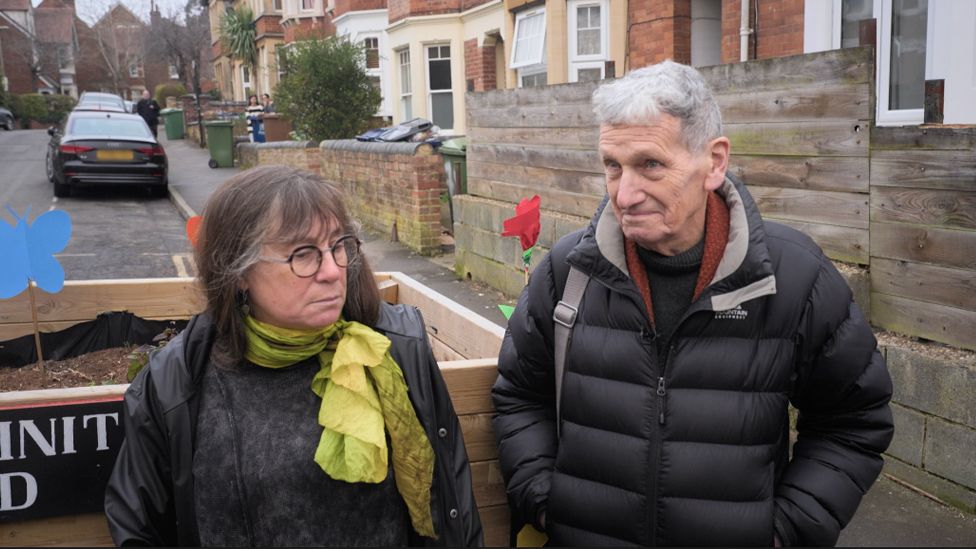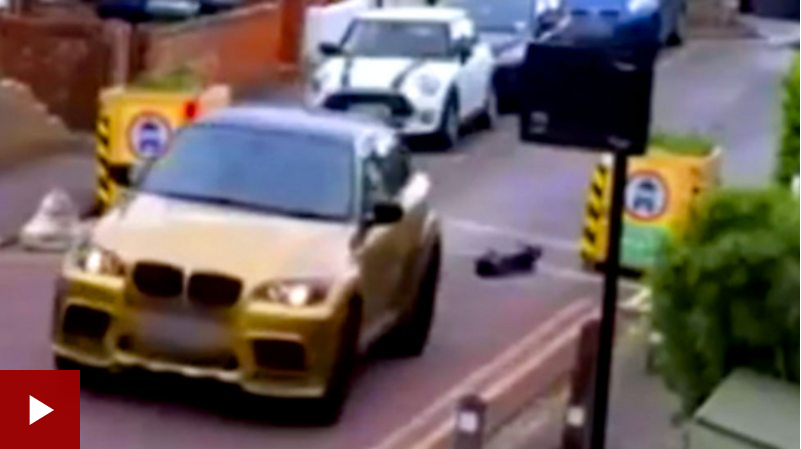You have probably never felt sympathy for a bollard before, but spare a thought for the one installed on Howard Street in east Oxford last year.
It is probably the most abused bollard in the UK.
It is blocking the road as part of a Low Traffic Neighbourhood – an LTN – and has been repeatedly run over, beaten, bent, burnt and, finally, stolen.
LTN schemes sound innocuous – they attempt to restrict through-traffic in local communities to cut congestion and pollution – but they have provoked fury.
As well as bollard abuse, LTNs have sometimes led to confrontations between local residents and – more recently – to mass protests.
Over the past few months, councils across England have been lobbied by vocal campaigners against the introduction of new traffic schemes, and some council meetings have been disrupted by activists.
What is an LTN?
LTNs involve restricting roads in local communities to virtually all through-traffic.
They are funded by the government as part of its £3.2bn active travel policy – and the aim is that half of all trips in England’s towns and cities be walked, cycled, or made in a wheelchair by 2030.
It is part of a push to reduce air pollution, cut greenhouse gas emissions and make us all a bit fitter and healthier.
Local authorities bid for government cash to pay for things, such as cycle lanes, big plant pots and bollards to redirect traffic to other roads.

Setting neighbour against neighbour
Oxford has been a focus of the debate over LTNs in recent years.
It got its first permanent LTN in the east of the city two years ago – and a second one is now being trialled.
There are also tough restrictions on how traffic moves through the centre of the city – including number plate recognition cameras that issue fines to cars driving on the high street during restricted hours.
Oxfordshire County Council says the medieval city can’t cope with the level of traffic it has now.
But opponents say the city’s efforts have ended up slowing traffic on main roads and dividing communities.
“They are setting neighbour against neighbour,” warns Richard Parnham, an Oxford resident who is campaigning against traffic restrictions in the city with a local pressure group called Reconnecting Oxford.
Mr Parnham says the schemes have “torn the city apart”.

There is no shortage of videos online showing angry confrontations over the new traffic schemes.
When bollards are stolen some residents have stepped in to block the road themselves, sometimes provoking violent reactions.
Theo Hopkins is 79 years old and one of these “human bollards”.
He says he has been hit twice during confrontations with angry drivers. Once a car pushed him off the road.
Do LTNs actually work?
Prof Rachel Aldred of Westminster University has studied the impact of 46 schemes in London and says motor traffic is down by an average of about 30% on the roads within the boundaries of the LTNs.
But many drivers and residents complain that LTNs just push the problem from side roads to main roads.
Prof Aldred says the evidence here isn’t clear.
Recorded traffic goes up on the boundary roads in half the LTNs she has studied – and down in the other half. The average increase in traffic flows on boundary roads is just over 1%. Prof Aldred says if LTNs were systematically pushing traffic on to boundary roads she believes her study would have picked that up.
Most LTNs are introduced on a temporary basis subject to consultation with local people, typically after a period of more than a year.
But, in the face of negative feedback, many local authorities have ripped out LTNs – some before the end of the consultation period.
Ealing Council in London removed seven of nine LTNs it had introduced, for example. A key issue for residents who opposed the schemes appeared to be the almost £3m of fines the council had collected from drivers who used the LTNs as cut throughs.
The Taxpayers’ Alliance, a pressure group which campaigns for lower taxes, says there has been a massive increase in fines imposed on motorists by local authorities.
It made Freedom of Information requests to 41 councils in England and Scotland – 37 responded.
It found the value of fines issued inside LTNs had increased from £700,000 in the year 2019-20, to almost £70m in 2021-22.
“We’re not against schemes to improve the air quality in our cities,” says Elliot Keck of the Alliance. “What we are against is schemes being used as cash cows.”
The Local Government Association, a cross-party body representing local authorities in England and Wales, says the cash raised covers the cost of enforcement with any surplus “being spent on local transport improvements”.
Sinister global plot?
But the opposition to the introduction of traffic restrictions has been becoming increasingly vocal.
Thousands of protesters marched in Oxford in February after the council announced plans for new restrictions on traffic through the centre of the city.
There was a flurry of claims on social media that the restrictions are evidence of a sinister global plot to limit our freedom to travel.
Since then, there have been protests in Cambridge, Bath and Thetford – while in Colchester, a council meeting to discuss proposals for more sustainable transport was disrupted by noisy protestors.
